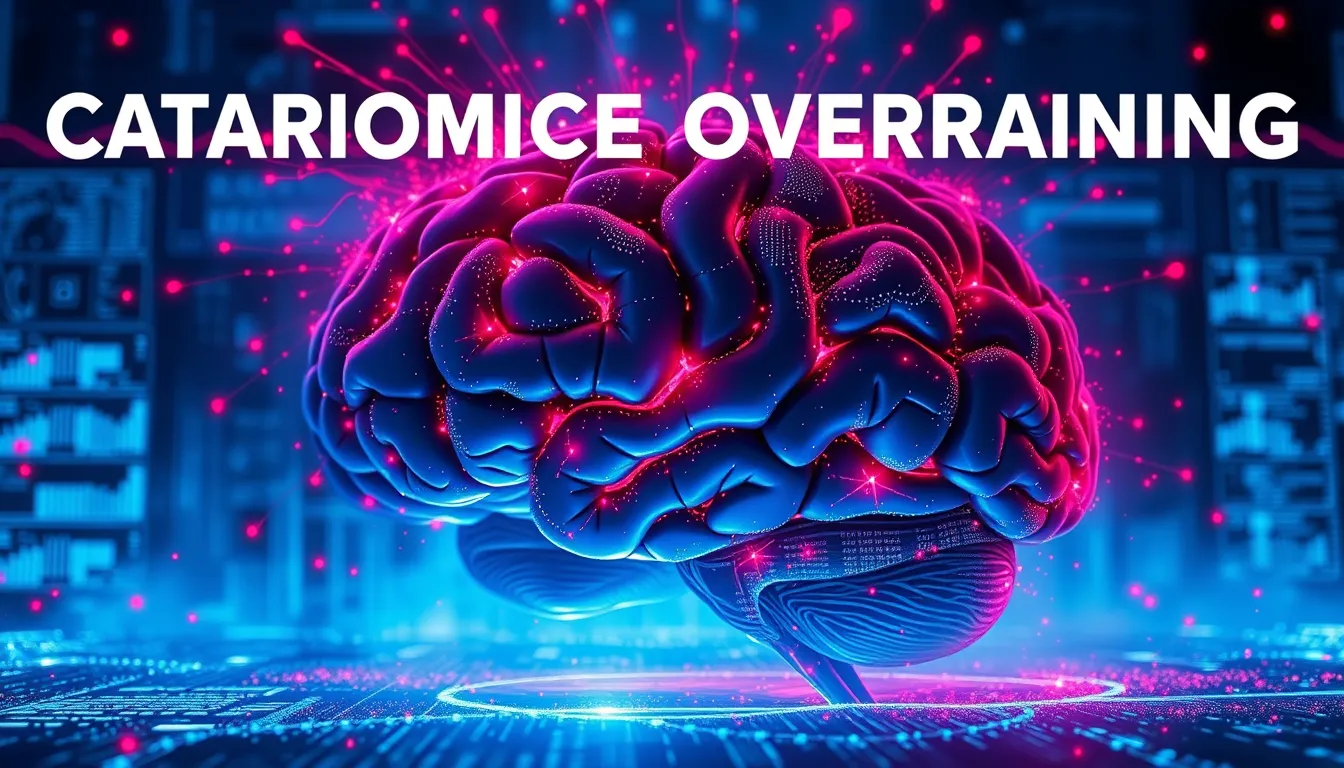Now Reading: Catastrophic Overtraining in Large Language Models: Urgent Insights
-
01
Catastrophic Overtraining in Large Language Models: Urgent Insights
Catastrophic Overtraining in Large Language Models: Urgent Insights

Catastrophic Overtraining in Large Language Models: Urgent Insights
Artificial intelligence continues to evolve at a rapid pace, yet a growing body of research warns about the inherent risks in the training processes of these systems. One such risk is known as catastrophic overtraining, a phenomenon that can severely impair the efficiency and reliability of AI. In this article, we explore the intricacies of catastrophic overtraining, examine its effects on overfitting in AI, and discuss modern model training paradigms along with potential solutions such as novel diagnostic tools and adaptive training regimes.
Understanding Catastrophic Overtraining
Catastrophic overtraining occurs when a model is trained excessively on a vast dataset, exceeding the capacity needed for optimal performance. This overexposure leads to a state where a model not only memorizes the training data but also starts to lose its ability to generalize to new, unseen scenarios. The primary focus on catastrophic overtraining in large language models highlights a critical juncture in AI development where additional data or prolonged training sessions no longer equate to performance improvements but instead trigger significant drawbacks.
The Pitfalls of Overfitting in AI
While traditional overfitting in AI represents a manageable risk, catastrophic overtraining takes this concern to a new level. Overfitting in AI typically involves a model that is too tuned to the training data, but catastrophic overtraining implies an overwhelming accumulation of errors. These errors compromise the model’s ability to provide accurate predictions or responses when faced with novel inputs. In this context, catastrophic overtraining in large language models becomes a dire warning sign for machine learning practitioners, urging a reconsideration of standard training techniques.
Model Training Paradigms and Their Challenges
Large language models are built on complex iterative learning processes that use techniques such as gradient descent to minimize prediction errors. However, when training continues beyond an optimal point, the benefits begin to turn into liabilities. Increasing the volume of training data does not always enhance performance; rather, it can lead to rigid internal representations that limit adaptability. This phenomenon is intricately linked to overall model training paradigms and the way AI computational resources are utilized.
Key challenges include:
- The exponential growth of computational resources required to train these models.
- The delicate balance between minimizing error and ensuring robust generalization.
- The risk of models becoming too specialized, thus failing in broader application scenarios.
Diagnostic Tools and Adaptive Training Regimes
Addressing catastrophic overtraining necessitates innovative solutions. One promising avenue is the development of novel diagnostic tools for AI overtraining. These advanced tools can help engineers monitor performance metrics more accurately and identify early signs of overfitting. By doing so, interventions can be made before the degradation in performance becomes irreversible.
In parallel, exploring adaptive training regimes for large language models offers another solution. Adaptive training regimes adjust the intensity and duration of training sessions based on the model’s learning milestones. This flexible approach is designed to optimize the learning process and reduce instances of overtraining. Additionally, incorporating optimization techniques that balance complexity with generalization potential can lead to more resilient AI systems.
Innovative Strategies for Practical Implementation
- Employ continuous monitoring systems to detect early signs of overfitting in AI.
- Recalibrate training schedules based on model feedback rather than fixed training epochs.
- Integrate novel diagnostic tools for AI overtraining to provide real-time insights.
- Invest in research towards adaptive training regimes that dynamically adjust to the model’s performance.
Broader Implications for the AI Industry
The concerns surrounding catastrophic overtraining are far-reaching. As industries such as finance, healthcare, and legal services increasingly rely on AI-driven technologies, the implications of overfitting in AI models become a matter of public interest. When AI systems perform erratically or produce inconsistent outcomes, the consequences can be severe—from financial discrepancies to critical errors in medical decision-making.
A recalibration of current training paradigms is thus essential. Stakeholders must reassess established practices, integrate key mitigation strategies, and invest in adaptive learning techniques that ensure sustainable improvement. It is through rigorous research, transparent dialogue, and the implementation of robust training protocols that the AI community can safeguard future innovations.
Conclusion
The exploration of catastrophic overtraining in large language models reveals a critical challenge in modern AI development. As researchers uncover the multifaceted risks associated with excessive training, it becomes clear that evolving training paradigms is crucial. By embracing novel diagnostic tools and adaptive training regimes, we can address the delicate balance between performance and overfitting in AI. Ultimately, these proactive measures will help preserve the integrity and reliability of AI systems, ensuring that advancements in technology continue to serve both innovation and societal well-being.
In summary, while the potential of AI is immense, careful consideration and strategic intervention are necessary to avoid the pitfalls of catastrophic overtraining. Stakeholders across academia and industry must collaborate to chart a path forward that prioritizes balanced, sustainable growth in the realm of large language models.

























